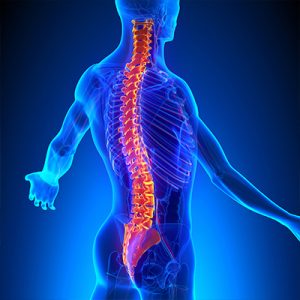
It’s human nature to want the best. Often, the best is the ideal: something that has value to those who are able to obtain it. An “A” grade on your child’s report card is the gateway to higher learning. A gold medal at the Olympics signals the standard for excellence and the best in the world.
Unfortunately, it’s not always possible to achieve the best. In fact, many people aren’t even sure what the ideal goal is when it comes to certain things. Ask someone what the ideal spine looks like, for example, and you’re likely going to get a mixed bag of answers.
Luckily, the team at Ideal Spine Health Center in Boise, ID knows exactly what an ideal spine looks like. And, more importantly, we understand the value that comes with having the best when it comes to spine health.
Mapping optimal spine structure
The number one biggest misconception about optimal spine structure is that a healthy spine is a “straight” spine. Actually, this is a half-truth that’s wholly misunderstood. A healthy spine is “straight” in a horizontal sense, in that it’s not translating from side-to-side. Vertically, however, a healthy spine actually has three curvature delineations:
- Cervical curvature (neck);
- Thoracic curvature (torso);
- Lumbar curvature (low back).
When properly proportioned, these curves follow a lordosis-kyphosis-lordosis pattern that objectively resembles an “S.”
Understanding the geometric values of an ideal spine
Optimal spine structure can be observed in its curves, but this curvature is subjective until measured. To truly understand the ideal spine, it’s critical to attach geometric values to each degree of curvature. This can be done using oval-elliptical shapes for the thoracic and lumbar curves, and a circle for the cervical curve.
Chiropractic BioPhysics (CBP) delineates each segment of the spine via its first and last vertebrae (ex. C1-C7 for the cervical spine). Then, using geometric shapes, a chiropractor calculates quantitative values for each degree of curvature in each patient. These findings are then paired against the Harrison Spinal Model, which is the standard for ideal spine structure in CBP.
Beyond the shape
Shape is far from the only variable of spine health. Compression of vertebrae and discs, condition of soft tissue, integrity of discs, nerve health, and more all dictate the difference between optimal spine health and chronic conditions.
Because many of these variables are dependent on the overhanging catalyst of spine shape, however, they’re tied into a fixation on curvature. CBP chiropractors take the time to assess these characteristics of the spine in a way that both supports and transcends spine structure. In working in both micro and macro capacities when dealing with the spine, it’s possible to shift closer to the Harrison Spinal Model while also alleviating many of the conditions that cause recursive habits to form.
Ideal Spine Health Center in Boise, ID places ultimate importance on helping patients strive for the optimal spine structure and overall health. We invite you to schedule a free consultation with us today. See for yourself where your spine stands in relation to the ideal and how it could get even closer to perfect with the help of a CBP-trained chiropractor.
Chiropractic BioPhysics, or CBP, is one of the most scientific, researched, and results-oriented corrective care techniques. CBP-trained chiropractors aim to realign the spine back to health, eliminating nerve interference and addressing the source of pain, fatigue, and disease. As with all chiropractic care, CBP is gentle, painless, and non-invasive.

